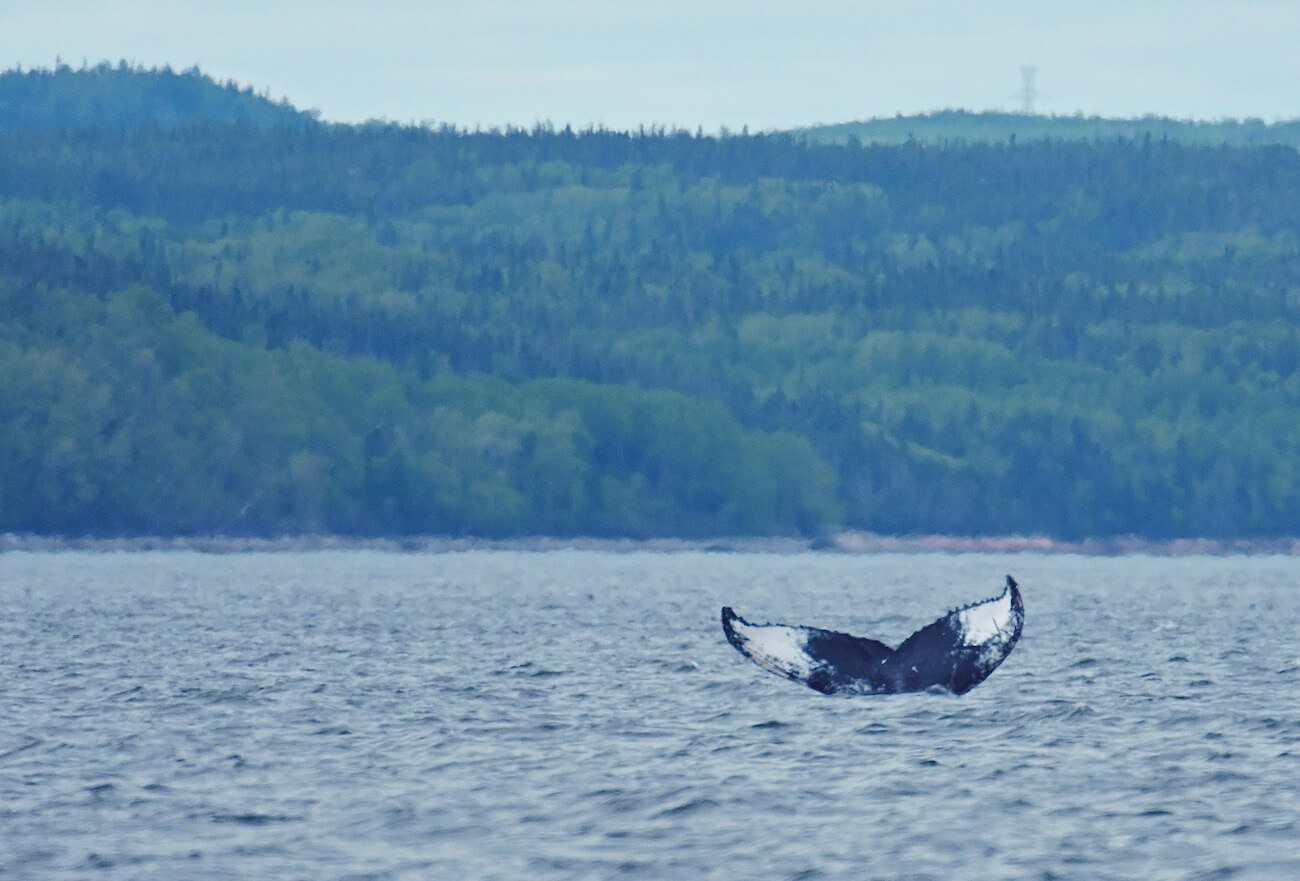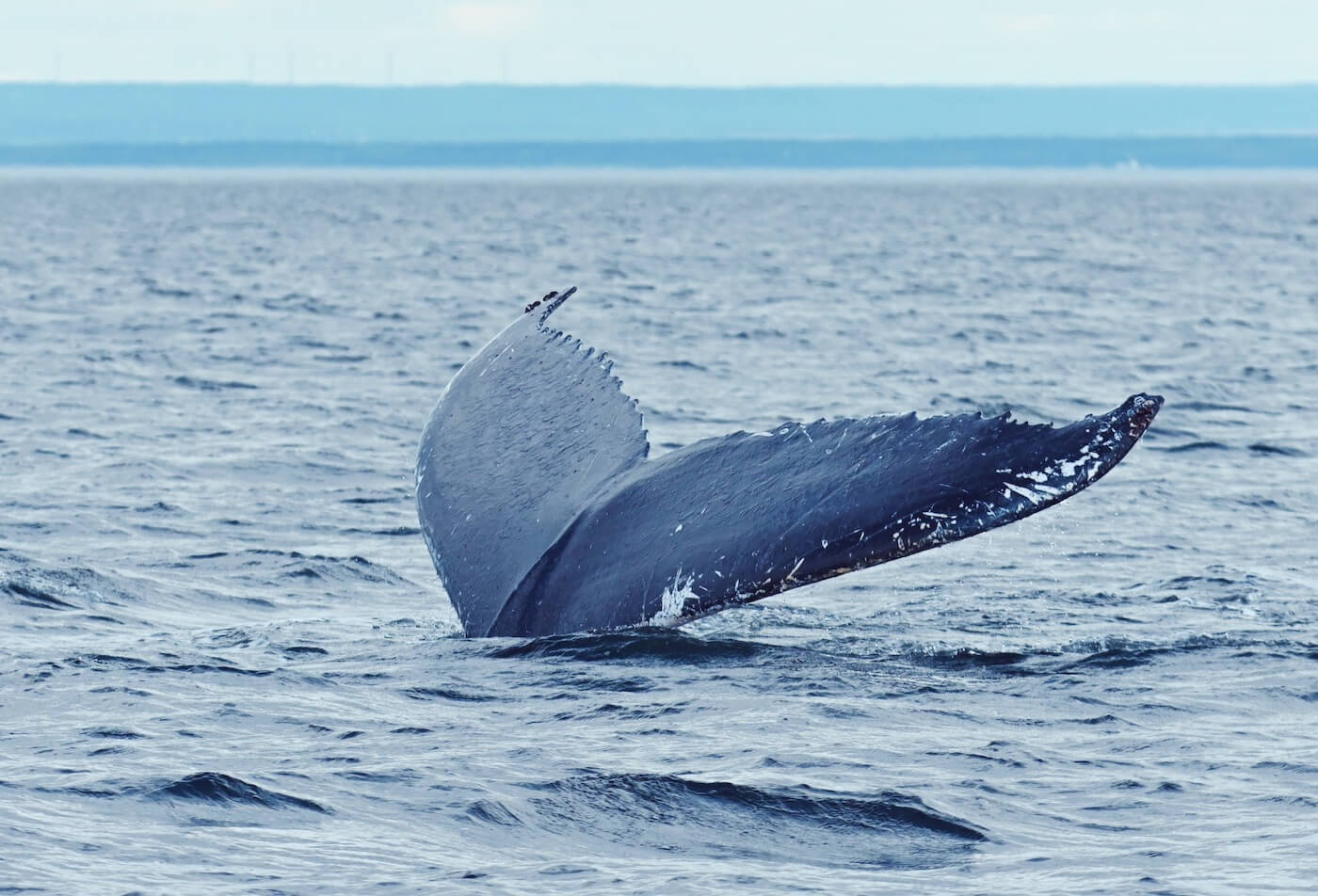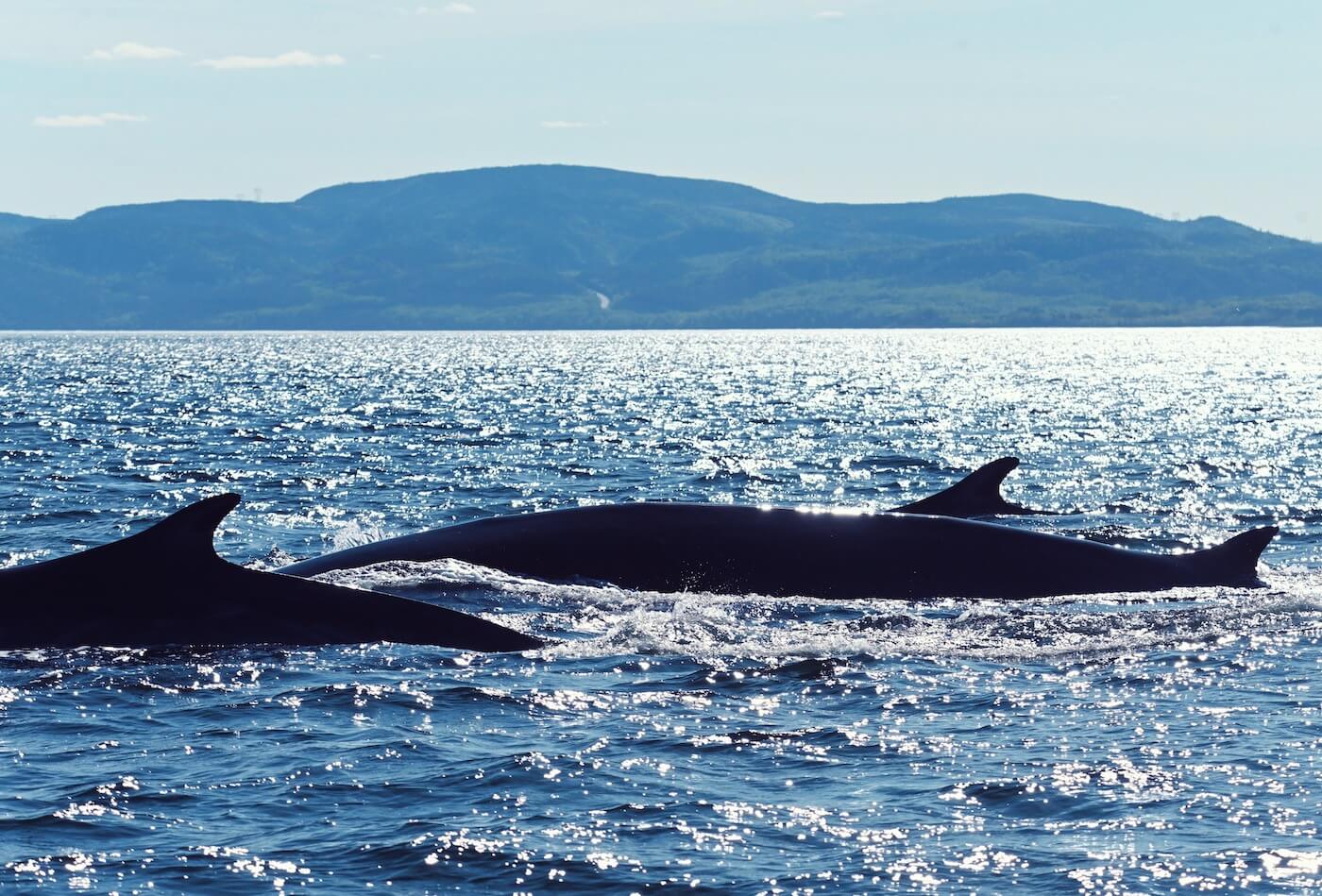The humpback whale Tic Tac Toe was observed in the Saguenay-St. Lawrence Marine Park for the first time this year! Belugas, minke whales and fin whales round out the picture in the estuary.
Tic Tac Toe
It was on the morning of May 30 that the first sighting of Tic Tac Toe was reported. Of all the whales in the St. Lawrence, this female humpback whale is a real star. Probably one of the best-known whales in these parts, this female is easily identifiable, has been making incursions into the estuary almost annually since 1999 and regularly shows her tail when she dives. Tic Tac Toe owes her name to the large “X” that can be seen on the right lobe of her tail. The highly serrated edge of her tail and its black-and-white colour pattern make her relatively easy to recognize.
She was not accompanied by a calf this year, but appeared a little thin in the photos. Which may be normal given that humpback whales migrate to the Caribbean where they go all winter without feeding, living off their fat reserves instead.
In 2020, 2021 and 2022, she had been seen with calves. The usual interval between births for humpbacks is approximately two to three years. In fact, gestation lasts between 11 and 12 months and once the calf is born, it will be nursed for anywhere from 5 to 10 months. A female can therefore give birth several years in a row, but this is very challenging energy-wise, since she would have to nurse her newborn calf while pregnant with another one.
Rorquals
On May 29, a naturalist counted up the day’s observations he made from shore between Les Escoumins and Tadoussac: “One blue whale, one humpback, five fin whales and three minkes.” And the list goes on! Throughout the week, it’s one adventure and anecdote after another. One marine mammal enthusiast shares her sightings from these waters abuzz with marine life: “Minke whales and belugas in large numbers offshore amongst thousands upon thousands of birds. A few days ago, very early in the morning, there were four humpbacks, but they didn’t stay long.”
In the middle of an observation session, a wildlife photographer is fooled by the behaviour of a humpback whale: “I thought it was a big hunk of floating wood until I saw it blow!” For whales, sleeping is quite a challenge! They are unable to fall into a deep sleep like us. In fact, for cetaceans, breathing is a voluntary action, meaning they must consciously swim up to the surface. Only one side of their brain rests at a time while the other side maintains control of the animal’s vital functions. When whales sleep, they are said to be “logging.”
Belugas and seals
A local resident in Sainte-Irénée gives the lowdown on white whale sightings: “I didn’t seen any all week, but on Saturday, a friend of mine saw around ten belugas from L’Anse-au-Sac.” In the last few weeks, this resident has seen pairs of belugas on a few occasions. Still, she maintains a positive outlook: “I remain optimistic about seeing bigger groups, as the season has only just begun!”
A Tadoussac resident spots belugas in the water as they peacefully exit the Saguenay Fjord. A few days earlier, she had gone to Les Bergeronnes for a little evening whale watching. “Two big blasts from fin whales in the swell on Sunday evening at Cap de Bon-Désir!” she explains. “Good thing for the spouts, as otherwise we would’ve had a really hard time spotting them.” All three species of seals were reported several times throughout the estuary, while in Franquelin, a minke whale was observed passing through.
Thanks to all our collaborators!
Special thanks go out to all our observers who share their love for marine mammals with us! Your encounters with cetaceans and pinnipeds are always a pleasure to read and discover.
On the water or from shore, it is your eyes that give life to this column.
Marie-Andrée Charleboix
Patrice Corbeil
Laetitia Desbordes
Diane Ostiguy
Jade-Audrey Lavergne
Renaud Pintiaux
Pascal Pitre
Christine Stadelmann
Andréanne Sylvain
Marielle Vanasse
And all those we left out!
Additionally, we would like to acknowledge the following teams that also share their sightings:
Mingan Island Cetacean Study (MICS)
Marine Mammal Observation Network (ROMM)
Quebec Marine Mammal Emergency Response Network (QMMERN)
Group for Research and Education on Marine Mammals (GREMM)
Would you also like to share your observations?
Have you seen any marine mammals in the St. Lawrence? Whether it’s a spout offshore or just a couple of seals, drop us a line and send your photos to [email protected]!







